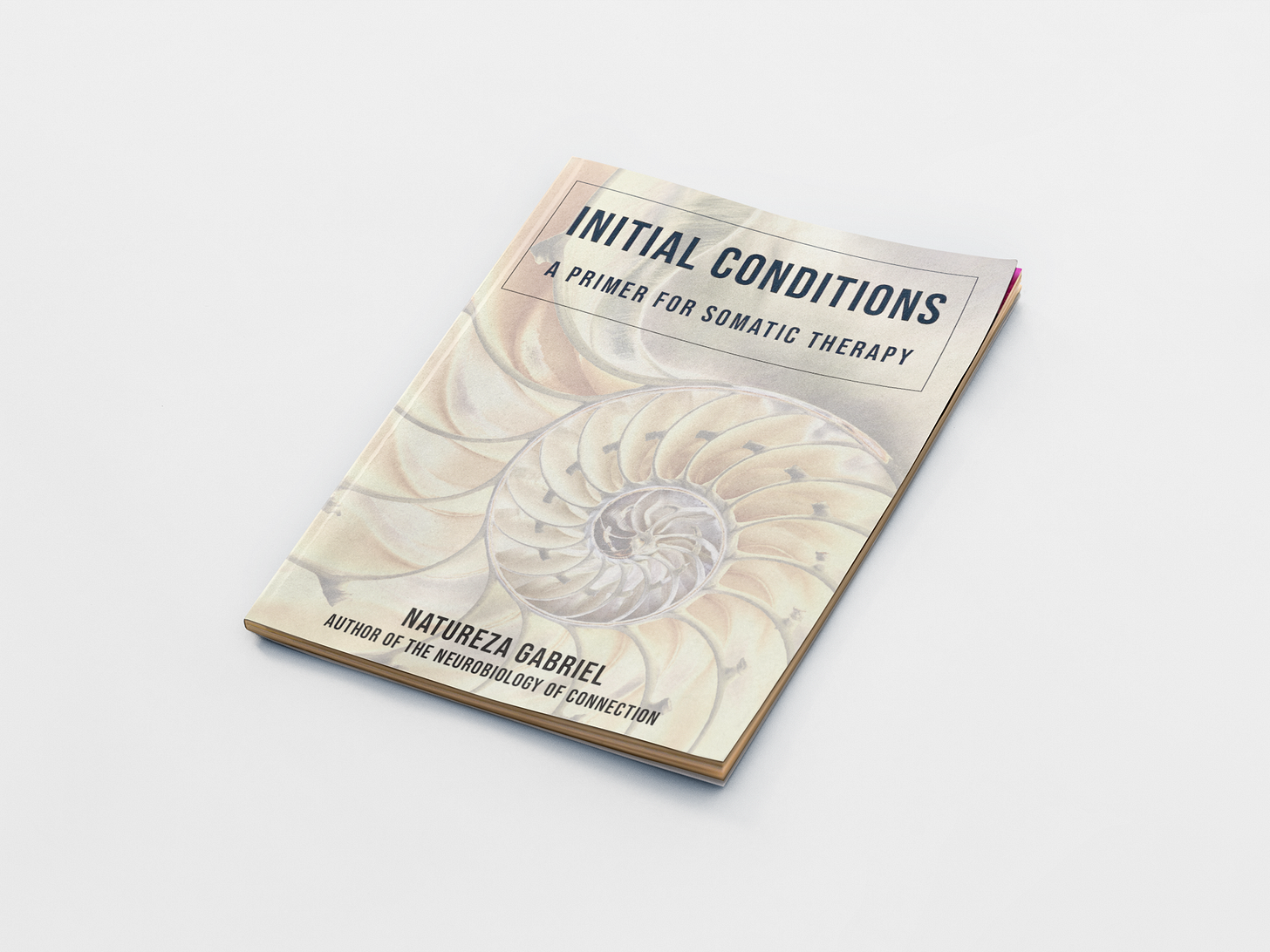A Primer for Somatic Therapy
Setting initial conditions, and understanding interoceptive textures
We are opening a neuro-transformational clinic. As I start to work one-on-one with people on autonomic transformation, again, I have quickly been brought back to the remembrance of the simple reality that the initial instructions that practitioners offer in somatic therapies – things like, Can you feel the way that your body just tensed up there when you started talking about that moment in the hospital? Or Where in your body do you feel that? or Could you try to tell me about the texture of that sensation? or Can you feel the softness in your hands, while being aware of the tension deeper in your arms? or Do you notice how your head wants to turn to the right? can elicit a blank stare.
Not only do many people not have the granular interoceptive present moment contact with their bodies that would allow them to answer those questions– at a more basic level they don’t understand why I’m asking them.
To be honest, this is generally the reason that I don’t work with people clinically unless they are familiar with our work. The barrier is too high because they don’t even understand why I would be asking them to focus on aspects of their experience that are not, candidly, within their ordinary purview anyway. This is like trying to read poetry with someone who is learning to spell. Not fun for either one of us.
This reminded me of the experience I had studying Somatic Experiencing®, Peter Levine’s naturalistic approach to the resolution of trauma, where as a student of the modality, when we were working with our cohort colleagues we had really interesting sessions, but when we started working with clients nothing happened. What I realized then, and came face-to-face with again recently, was that context is deeply salient. Of course it is.
Everyone studying Peter’s modality had 1) chosen to be there, 2) was invested in understanding how and why it worked, and 3) was pre-disposed towards being generous - towards finding value - in our oftentimes awkward early attempts to accompany one another. Whereas clients? No fucks given about understanding the modality. They just wanted to feel better, and somehow had landed in a seat across from us.
This conundrum of context setting is why I just wrote a handbook called Initial Conditions: a primer for somatic therapy. I wrote it to hand out to people we are working with at the Hearth clinic, something they can sit down with before their first session, something to orient them in useful ways to what is about to happen. Working with me one-on-one is expensive, and we can make much better use of my time, and their money, if I spend a half-hour orienting them before we begin. I guess I could have done this with a video, but for some reason it emerged as a handbook.
And then it occurred to me that most practitioners working somatically would likely benefit from a short handbook they could hand out before their first session. It is 40 pages, 4 x 6 inches, with a full-color interior.
The other thing I give people before we work together is a map of interoceptive textures. I think of this as part of the pattern language of autonomic state. In my mind it lives adjacent to a set of maps of archetypal motor gesture, and archetypal postural structure, part of the living map of what makes autonomics visible and trackable.
There are no sessions I engage where the texture of sensation, its gradations, or its lack is not part of how I am diagnosing and treating. The purview of our work is the sensate body. Interoception is the Mother of All the Senses. How could learning its language not increase your intimacy with the interior landscape of the body you are wearing?
Here is a version of the map:
Keep reading with a 7-day free trial
Subscribe to The Neurobiology of Connection to keep reading this post and get 7 days of free access to the full post archives.



